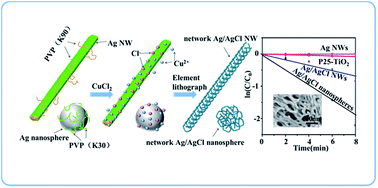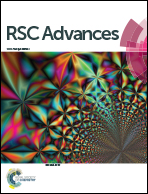A special Ag/AgCl network-nanostructure for selective catalytic degradation of refractory chlorophenol contaminants†
Abstract
A special Ag/AgCl network-nanostructure was synthesized based on a Ag nanowire (NW) or nanosphere template through the element lithographic network construction process. The structure of obtained Ag/AgCl is a 3D nanoscale network-structure that consists of the network NWs with the average diameter of ∼20 nm and porous channels with narrow macropore distribution from 50 to 100 nm. As-designed network-nanostructures not only provide firm frame support for the active sites, but also offer large surface areas and numerous reaction performance chambers, and consequently greatly facilitate reactant diffusion and transport. Employed as UV-driven plasmonic photocatalysts, the formulated Ag/AgCl nano-networks exhibit excellent performance and stability for the selective degradation of chlorophenol contaminants. Compared with the commercial P25-TiO2, the prepared Ag/AgCl network-nanostructures show considerably higher photocatalytic activity, in which the network-structured nanospheres are better than network-structured NWs toward the selective degradation of 4-chlorophenol with the reaction rate constant of 0.28 min−1, suggesting good potential application for organic pollutant elimination.


 Please wait while we load your content...
Please wait while we load your content...